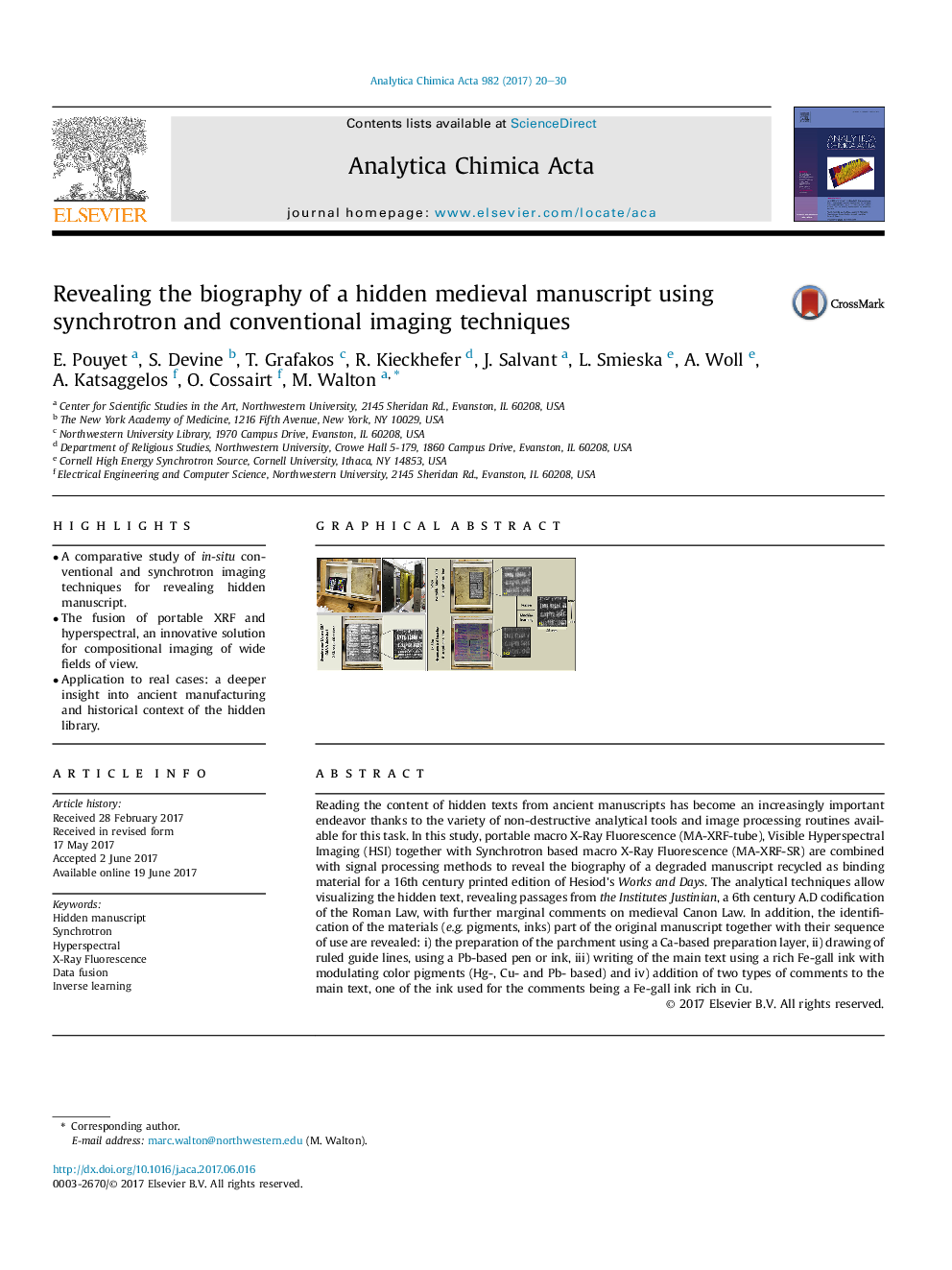| Article ID | Journal | Published Year | Pages | File Type |
|---|---|---|---|---|
| 5130846 | Analytica Chimica Acta | 2017 | 11 Pages |
â¢A comparative study of in-situ conventional and synchrotron imaging techniques for revealing hidden manuscript.â¢The fusion of portable XRF and hyperspectral, an innovative solution for compositional imaging of wide fields of view.â¢Application to real cases: a deeper insight into ancient manufacturing and historical context of the hidden library.
Reading the content of hidden texts from ancient manuscripts has become an increasingly important endeavor thanks to the variety of non-destructive analytical tools and image processing routines available for this task. In this study, portable macro X-Ray Fluorescence (MA-XRF-tube), Visible Hyperspectral Imaging (HSI) together with Synchrotron based macro X-Ray Fluorescence (MA-XRF-SR) are combined with signal processing methods to reveal the biography of a degraded manuscript recycled as binding material for a 16th century printed edition of Hesiod's Works and Days. The analytical techniques allow visualizing the hidden text, revealing passages from the Institutes Justinian, a 6th century A.D codification of the Roman Law, with further marginal comments on medieval Canon Law. In addition, the identification of the materials (e.g. pigments, inks) part of the original manuscript together with their sequence of use are revealed: i) the preparation of the parchment using a Ca-based preparation layer, ii) drawing of ruled guide lines, using a Pb-based pen or ink, iii) writing of the main text using a rich Fe-gall ink with modulating color pigments (Hg-, Cu- and Pb- based) and iv) addition of two types of comments to the main text, one of the ink used for the comments being a Fe-gall ink rich in Cu.
Graphical abstractDownload high-res image (534KB)Download full-size image
